1900 Trans-Siberian Railway Egg
Gift Nicholas
II to Alexandra Feodorovna
Made in Saint Petersburg
Owner: Kremlin Armoury Museum, Moscow
Height: 26 cm
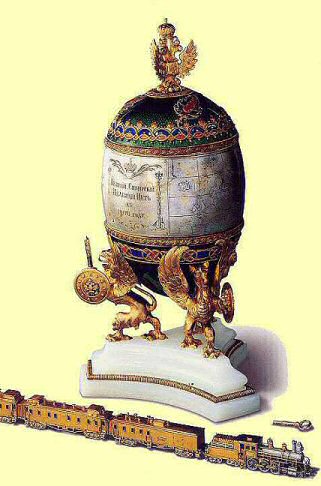
The 1900 Trans-Siberian Railway Egg is made of gold, silver, green, blue and orange enamel, onyx and velvet for lining. The Miniature train is made of gold, platinum, rose-cut diamonds, rubies, and rock crystal.
The silver Egg with a hinged lid decorated with colored enamel and mounted on an onyx base. A map of Russia is engraved with the route of the Trans-Siberian Railway on the central silver section, which also bears the inscription "The route of the Grand Siberian Railway in the year 1900." The lid of the Egg is hinged, has an overlay of green enamel, and is decorated with inlaid leaves of acanthus. A three-sided heraldic eagle in silver and gold plate rises from the lid, bearing a crown. The Egg is supported by three griffins cast in gold-plated silver, each brandishing a sword and shield. The stepped base is of white onyx in the form of a triangle with concave sides and rounded corners. A gold-plated silver braid is inlaid into the base. A working model of the train was inserted into the Egg section by section. It consists of a platinum locomotive with a ruby lantern and rosette headlights and of five gold coaches with windows of rock crystal. The coaches are marked "mail", "for ladies only", "smoking", and "non-smoking". The last coach is designated "chapel". The train was wound up with a golden key.
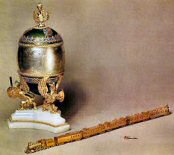
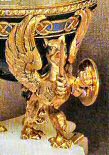
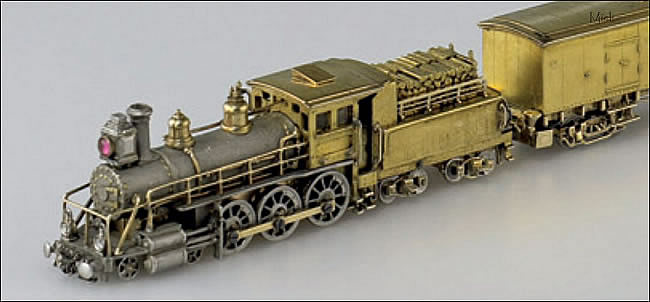
Beautiful details of the Locomotive - (Courtesy the Finnish Stone Centre, Juuka, Finland)
Background information
Nicholas II, as the Tsarevich, laid the foundations for work on the construction of the Siberian Railway, when he reached Vladivostok on the final part of his overseas journey in 1890 - 1891. Tsar Alexander III had sent his two elder sons on a voyage to the Far East to broaden their outlook. (see the 1891 Memory of Azov Egg).
The work on the railway cost many lives and millions of Rubles. It took nine years to construct, and work continued for some time after the presentation of this Egg, the incomplete section being marked as such on the Egg's map of the route.
The Trans-Siberian Railway Egg was transferred in 1927 to the Kremlin Armoury Museum in Moscow and is one of the ten Eggs that were never sold.
Update 2013
Commemorative plaque with bas-relief of Tsarevich Nicholas Alexandrovich installed at the railway station in Vladivostok
During the celebrations of the 400th anniversary of Romanov reign, in Vladivostok a memorial board of Tsarevich Nicholas Alexandrovich was installed and consecrated. (Courtesy Paul Kulikovsky - Romanov News)

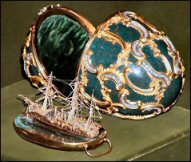
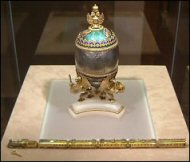
2013 commemorative plaque, 1891 Memory of Azov Egg, 1900 Trans-Siberian Railroad Egg. Sources: http://vlc.ru/news/2013/68442/ (relief), Azov Egg - Wiki, Transsib.Egg - Wiki
On May 19, 1891, the than Tsarevich laid the first stone of the Trans-Siberian Railway. It took nine years to construct the railway. The journey on the Memory of Azov and the completion of the Trans-Siberian Railway were commemorated by Fabergé in the 1891 Memory of Azov Egg and the 1900 Trans-Siberian Railway Egg.
(The above article about the commemorative plaque was first published in the Fabergé Research Newsletter).
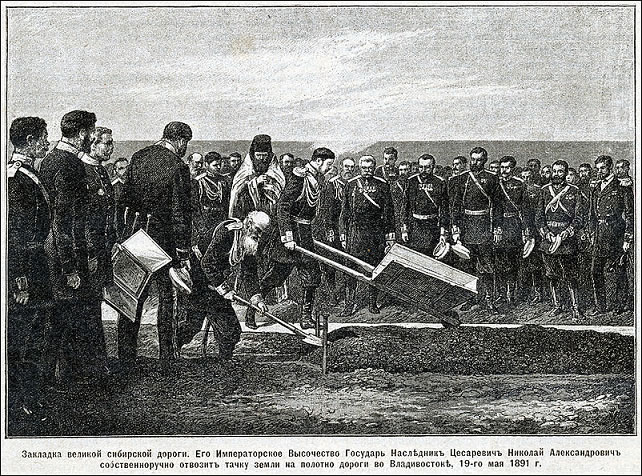
Above, courtesy and source wiki. Tsesarevich Nicholas Alexandrovich laying the foundation stone in Vladivostok on May 19, 1891.
Update 10 October 2016
Not much about the Egg but because it is so cute and the music so beautiful! Google honors the 100th anniversary of completion of the Trans-Siberian railway with a "Doodle". Published on October 5, 2016, they write: From the country’s small villages to its big cities, Russia depends on the mighty Trans-Siberian Railway to traverse more than 6,000 miles and seven time zones between Moscow and Vladivostok. Read the complete text and more here! Composition: Serenade for Strings in C Major, Op. 48, II. Waltz. Composer: Pyotr Ilyich Tchaikovsky. Recording by: Moscow Virtuosi Chamber Orchestra.
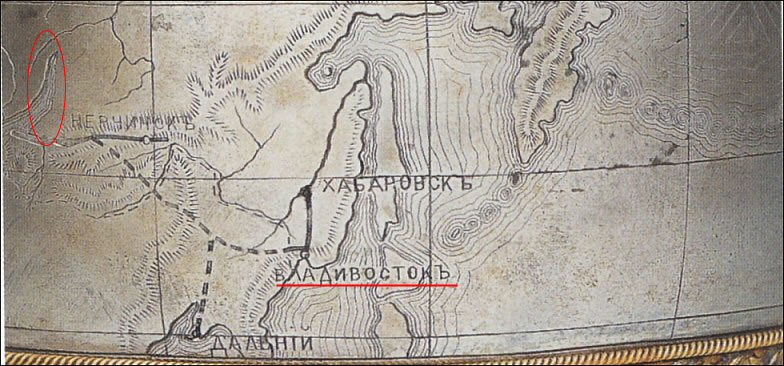
Map above, source and courtesy Tatiana Muntian, Fabergé Easter Gifts (in Russian) 2003, 47
The dotted line is that part of the Trans-Siberian Railroad that was not finished in 1900. The by me red underlined word is Vladivostok in cyrillic. Left on the map, (again by me) circled in red, Lake Baikal. Other cities are Nerchinsk (Russian: Не́рчинск) right next to Lake Baikal, Khabarovsk (Russian: Хаба́ровск) above Vladivostok and, last but not least, Dalniy (Russian: Дальний) at the bottom, under Vladivostok.
This last city kept me of the streets for quite some time as in de first place, I had never heard of it, and in the second place, once I knew the other name, I spent hours and hours reading on the Internet!
Much simplified, Dalniy is Port Arthur. And those who know a little about the history of Imperial Russia, know that in the Russo-Japanese war (1904-1905) Port Arthur was a key player. The city was in those days the only ice fee harbor for Russia, who had it sort of "leased under pressure" from China. Before China, Port Arthur was owned by Japan and this move made Japan very angry with Russia. But all that was of course not known in 1900 when the Egg was Easter present for the Tsarina.
No matter what, the Trans-Siberian Railway was and is an impressive project, and today (2016), together in a network with a couple of Chinese railways, the railway is still in use! Read more about Dalian of Dalnyi, Liaodong Peninsula-Port Arthur, Chinese Eastern Railway en de Trans-Siberian Railroad.
A beautiful photo of the train inside the Egg. Courtesy: https://www.examinerlive.co.uk/whats-on/whats-on-news/york-you-can-see-faberg-19050320
![]() 1902 Von Dervis Fabergé Exhibition in Saint Petersburg, Russia
1902 Von Dervis Fabergé Exhibition in Saint Petersburg, Russia
Page updated: Oktober 19, 2020

